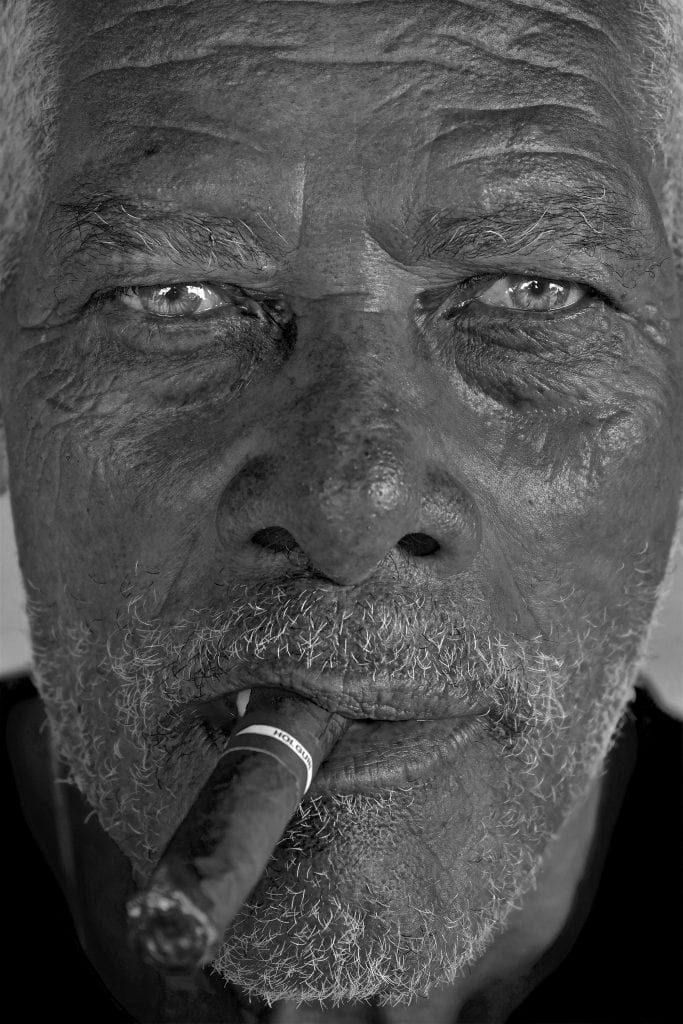When I think of the great master photographers who have inspired me, I rarely think about their gear. The great Cartier-Bresson –it has been drummed into my head–shot mostly with his trusted Leica and 50mm lens. Those of you familiar with this blog, know that I’m a Nikon guy who understands the equipment I use are tools, yet I have a strange fascination and appreciation for gear as art object /wonder of technology.
So when I stumbled upon this little piece in the Wall Street Journal I felt a little better about my guilty obsession with the tools I use to create. Turns out Mr. Eggleston is a bit of a gear lover himself, stockpiling his mostly Canon and Leica cameras to the tune of “I have about 300 right now”. From classic chrome bodies to rare, custom-painted Leicas in blue, green and gray.
When you have such a collection, no ordinary container should cart the cameras around. You can see in the picture above, one of the three cases he customized and retrofitted along with a woodworking friend from a leather briefcase bought at a Memphis shop.
I guess my own “gear problem” that my wife often winks at (I have many problems– photo book problem, camera bag problem…it goes on) isn’t as bad as I thought.
*Small Print: It’s still about the photographs.












For me Eggleston was a complete mystery for many years. I grew to appreciate and love his work after spending a lot of time looking Lee Friedlander and Lewis Baltz and, Joe Deal and Robert Adams. They were all working in B&W but the ideas and issues that inform their work come from Eggleston. Stephen Shore is, I believe, the heir to Eggleston despite his use of LF.
In all, I love the images for their use of color and the careful composition and their call to study the contents of the frame.
As a note, I was surprised to learn that Eggleston takes one exposure of the scene he sees and moves on. THAT is confidence in the statement of is vision.
Mark, thanks for your thoughtful reply…I agree with your comments and as much as I’m an advocate of “working the scene”…one image then move on works for the master Eggleston but not for most of us.
I think “working the scene” is the bane of modern photography technique and institutionalized teaching (not that I’m not guilty of it myself). The early practitioners all mention getting that “one shot”. Weston, Stieglitz, Bresson and Adams all talk of it. You never see anything about going home and having to edit through dozens of shots to find one that will “work”. They’ve done their work right up to the time they press that shutter button. I’m not sure if it’s confidence or not but, “One and done!”
Yes Mark this has been the opposite of my mantra…working the scene has taken me to new and stronger perspectives on the scene but you’re right. The early photographers particularly those that used larger format or Speed Graphic did not have the luxury (maybe time but money was an issue) to take too many shots of each scene. Could their extraordinary work been even better if they had? Nobody knows.
I still haven’t managed to understand his work. I can appreciate the simplicity of the subjects he chooses but some seem so bland. It’s me, the fault must be my own I suppose. I really like Walker Evans’ work which is direct and simple for instance. But with Mr. Egglestone I’m still blind.
If I could trade my eyes in for a dofferent pair, I would like one of Bruce Gildens eyes for Black and white photographs and one of Mr Egglestone for color photographs. I live in the same town as Mr Egglestone but nev er had the good fortune to meet him.
An interesting trade, I do not disagree…but if you trade for Bruce Gilden’s eyes be prepared for a fight or two…I hope you run into Mr. Eggleston at a coffee shop in Memphis.